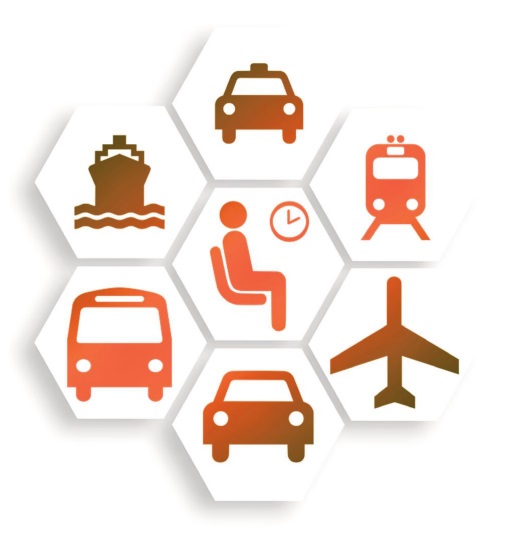- Rider information on services in accessible formats for persons with different types of disabilities (e.g. information in large print, braille or alternative and electronic formats).
- Assistance equipment and accessible features such as lifts, ramps, securement devices (straps for securing wheelchairs on board), signage, and communication devices.
- Adequate time to board and exit from the vehicle.
- Accompaniment by service animals such as any guide dog, signal dog or other animal individually trained to provide assistance to an individual with a disability, regardless of whether the animal has been licensed or certified by a state or local government.
- Priority seating and signs on fixed-route systems (transportation that operates along a prescribed route according to a fixed schedule). Such transportation must have signs designating seating for passengers with disabilities. At least one set of forward-facing seats must be marked as priority seating.
- Architectural requirements such as: stop announcements (at transfer points, major intersections, destination points and per riders’ requests), announcement of destination and route information (such information must also be provided on the front and boarding side of the vehicle), lifts and ramps so that a passenger who uses a wheelchair or mobility device can reach a secure location onboard, illumination, contrast, and slip-resistant surfaces, fare box to ensure passenger flow, and turning room, handrails, and pull cords for accessibility.
- Other requirements on all trains, airlines, and subways include: level boarding and narrowing the gap between train doorways and station platforms, curb ramps on sidewalks and entrances, functioning elevators, Braille in elevators, an emergency evacuation plan, accessible restrooms, including: grab bars, raised toilet seats and insulated lavatory pipes, accessible alarms, water fountains and collection equipment.
Challenges in the present public transportation system: In spite of the requirements of the ADA, there are persistent gaps in compliance that continue to create significant barriers for people with disabilities. There are many challenges in
the present public transportation system that need to be addressed, especially when our nation's investments in transportation infrastructure have disproportionately favored cars and highways. Those who cannot afford or do not drive cars often lack viable (and affordable) transportation options. Individuals with disabilities, particularly in rural communities, are at a transportation disadvantage as there are few public transportation options available. Accessible and affordable transportation options that bring employment, health care, education, housing, and community life within reach, are critical for independent living. According to the Bureau of Transportation Statistics, nearly 25 million people have a travel-limiting disability, which means 1 percent of all Americans, and among them about 3.6 million people are restricted to their homes because of a disability.4

There are many challenges in the present public transportation system that need to be addressed; those who cannot afford or do not drive cars often lack viable transportation options. Individuals with disabilities, particularly in rural communities, are at a transportation disadvantage, as there are few public transportation options available.
Essential steps to an inclusive and equitable transportation system can be created for people with disabilities by increasing awareness and by changing attitudes. Changes in attitude, commitment and action are required at all levels: politicians and officials, engineers and contractors who design and build roads, pedestrian facilities, and public transport systems, the operators of transport services, and fellow travelers. Some important examples are:
- Assumptions should never be made about what individuals with disabilities need, instead they should be consulted and engaged in deciding what they require.
- Individuals with disabilities must be factored into transportation planning policies, design, and budgets right from the start instead of retrofitting accessibility features later, which is both difficult and more expensive.
- Universal design approach “design for all” features, such as: low-floor buses with ramps, larger destination signs, floor markings, additional grab bars, audible stop announcements, and monitors that show upcoming stops have greatly enhanced accessibility. However, they must be maintained periodically, and equipment such as lifts and other wheelchair and scooter securing equipment must be kept in good working condition.
- Training and education must be provided to everyone engaged in the design, delivery, operation and use of transport, including the senior managers to transport employees in direct contact with the travelling public, including bus drivers,